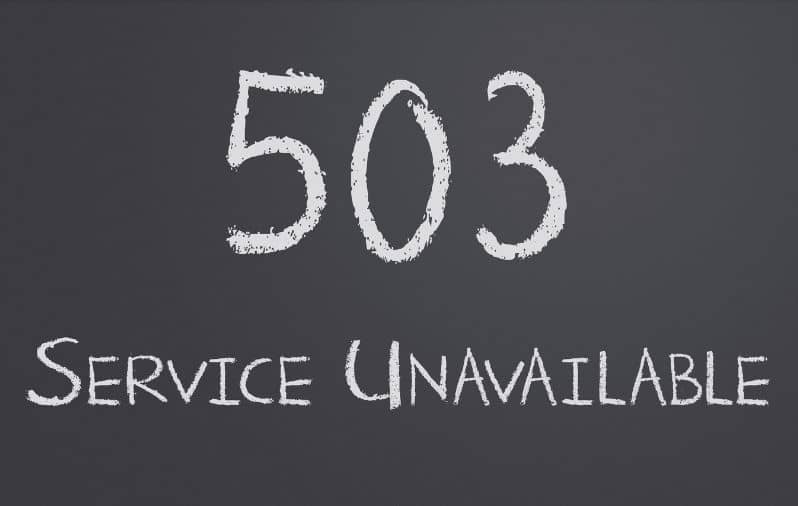
In today’s digital age, a robust online presence is essential, especially for businesses and individuals in Singapore. With Google serving as the primary gateway to the internet, achieving a high ranking on its search engine results pages (SERPs) is paramount for visibility and success. However, navigating the intricacies of search engine optimization (SEO) can be challenging.
Investing in the expertise of an SEO consultant Singapore and undergoing SEO training can provide invaluable insights and strategies to improve your website’s ranking effectively. But for now, let’s delve into 16 common reasons why your page might not be ranking well on Google, along with potential solutions:
1. Crawling Blocks
Understanding Crawling Issues
One common reason for poor rankings is when search engine bots encounter obstacles while trying to access and crawl your page. These obstacles can include directives in your robots.txt file that inadvertently block access to important content or pages behind password protection.
Solutions
To address crawling blocks, it’s essential to review your robots.txt file and ensure it’s not unintentionally preventing access to vital content. Additionally, check for any password protection on your pages and remove it if unnecessary.
2. Indexing Issues
Importance of Indexing
Indexing is the process by which search engines like Google catalogue and organise web pages. If your page isn’t indexed, it won’t appear in search results, leading to poor visibility and traffic.
Confirming Indexing
To confirm whether your page is indexed, use Google Search Console to check its status. If your page isn’t indexed, explore potential reasons such as canonicalization issues or crawl errors.
3. Internal Links
Significance of Internal Linking
Internal links are links that point from one page on your website to another. They help search engines understand the structure and hierarchy of your site, as well as distribute PageRank.
Implementing Internal Links
Ensure that your page is linked to from other relevant pages on your website. This helps signal its importance to search engines and can improve its ranking.
4. Page Speed
Impact of Page Speed
Page speed is a critical ranking factor that affects user experience and search engine rankings. Slow-loading pages frustrate users and may lead them to abandon your site, resulting in higher bounce rates and lower rankings.
Improving Page Speed
Focus on improving Core Web Vitals such as Largest Contentful Paint (LCP), Input Delay (INP), and Cumulative Layout Shift (CLS). Compress images, minimise server response times, and leverage browser caching to enhance page speed.
5. Rendering
Ensuring Proper Rendering
Proper rendering is essential for search engines to accurately interpret and index your content. If Google encounters rendering issues, it may not fully understand your page’s content, leading to lower rankings.
Fixing Rendering Issues
Identify and fix any issues that may prevent proper rendering, such as broken JavaScript or CSS files. Use tools like Google’s Mobile-Friendly Test to ensure your page renders correctly on all devices.
6. Keyword Cannibalization
Understanding Keyword Cannibalization
Keyword cannibalization occurs when multiple pages on your site target the same or similar keywords. This can confuse search engines and dilute the authority of your pages, leading to lower rankings for targeted keywords.
Preventing Cannibalization
Audit your site to identify instances of keyword cannibalization and consolidate overlapping content where possible. Focus each page on unique keywords and topics to avoid confusion.
7. Content Format
Importance of Diverse Content Formats
Google’s SERPs often feature a variety of content formats, including videos, images, and featured snippets. To compete effectively, it’s essential to incorporate diverse content formats alongside traditional written content.
Incorporating Videos
Consider creating informative and engaging videos related to your content. Videos can attract more organic traffic and enhance user engagement, leading to improved rankings.
8. Searcher Intent
Aligning with Searcher Intent
Google’s algorithms prioritise content that best satisfies user intent. To improve your rankings, ensure that your content aligns with the searcher’s intent and provides relevant answers and solutions.
Researching Intent
Conduct keyword research to understand the intent behind specific search queries. Tailor your content to address user needs and preferences effectively.
9. Competitor Analysis
Importance of Competitor Analysis
Analysing competitor pages can provide valuable insights into areas where your content may be lacking. By identifying competitor strengths and weaknesses, you can refine your SEO strategy and improve your rankings.
Identifying Competitor Strategies
Study competitor pages ranking higher than yours for target keywords. Analyse their content quality, structure, and backlink profiles to uncover opportunities for improvement.
10. Optimization
Optimising Content
Optimising your page’s content, meta tags, and other on-page elements is crucial for improving visibility and rankings. Focus on relevant keywords and user intent to enhance your page’s relevance and authority.
Conducting Keyword Research
Perform keyword research to identify relevant terms and phrases with high search volume and low competition. Incorporate these keywords naturally into your content to improve its visibility.
11. Uniqueness
Adding Unique Value
In a crowded online landscape, it’s essential to add unique value to your content to stand out from the competition. Providing original insights, data, or perspectives can differentiate your page and attract more organic traffic.
Creating Original Content
Avoid duplicating content from other sources and strive to offer unique perspectives and insights. Invest in research and analysis to provide valuable information that can’t be found elsewhere.
12. Language
Importance of Language
Language plays a crucial role in attracting and engaging your target audience. Ensure that your content is written in a language that resonates with your audience and aligns with their preferences.
Tailoring Content
Adapt your content to suit the language preferences and cultural nuances of your target audience. Consider localising content for specific regions or demographics to improve relevance and engagement.
13. Manual Actions
Checking for Manual Actions
Google may impose manual actions on websites that violate its guidelines. These actions can significantly impact your site’s visibility and rankings, making it essential to monitor for any penalties.
Resolving Violations
Review Google Search Console for any manual action notifications and take prompt action to address violations. Rectify issues such as thin content, unnatural links, or deceptive practices to regain lost visibility.
14. Backlinks
Importance of Backlinks
Backlinks from authoritative websites signal to Google that your page is trustworthy and valuable. Building high-quality backlinks is essential for improving your page’s credibility and ranking potential.
Earning Quality Backlinks
Focus on earning backlinks from reputable websites within your industry or niche. Create compelling content that naturally attracts links from other sites, and engage in outreach to secure placements on relevant websites.
15. E-A-T Signals
Enhancing E-A-T
Expertise, authoritativeness, and trustworthiness (E-A-T) are essential factors that Google considers when ranking pages, especially those related to YMYL (Your Money or Your Life) topics. Enhancing your page’s E-A-T signals can improve its visibility and credibility.
Demonstrating Expertise
Establish yourself or your brand as an authority in your field by creating high-quality, authoritative content. Showcase relevant credentials, certifications, or awards to demonstrate expertise and credibility.
16. Algorithm Changes
Staying Updated
Google frequently updates its search algorithms to improve user experience and combat spam. Staying informed about these changes and adapting your SEO strategy accordingly is crucial for maintaining and improving your rankings.
Adapting Strategies
Monitor industry news, Google announcements, and algorithm updates to stay ahead of changes that may affect your rankings. Adjust your SEO tactics and content strategy to align with evolving best practices and algorithmic requirements.
Conclusion
Achieving high rankings on Google requires a multifaceted approach that addresses various ranking factors. By systematically analysing and addressing issues such as crawling blocks, indexing problems, and content optimization, you can improve your page’s visibility and ranking potential.
Stay proactive, keep abreast of algorithm changes, and continually refine your SEO strategy to maintain and enhance your position in the SERPs.
If you like this article, you may want to read this article about Rethinking SEO: Prioritizing Ranking Over PageRank.
The post 16 Reasons Why Your Page Might Not Be Ranking Well on Google first appeared on Dynamic Marketing.
source https://www.dynamicmarketing.sg/digital-marketing/why-page-not-ranking-on-google/









